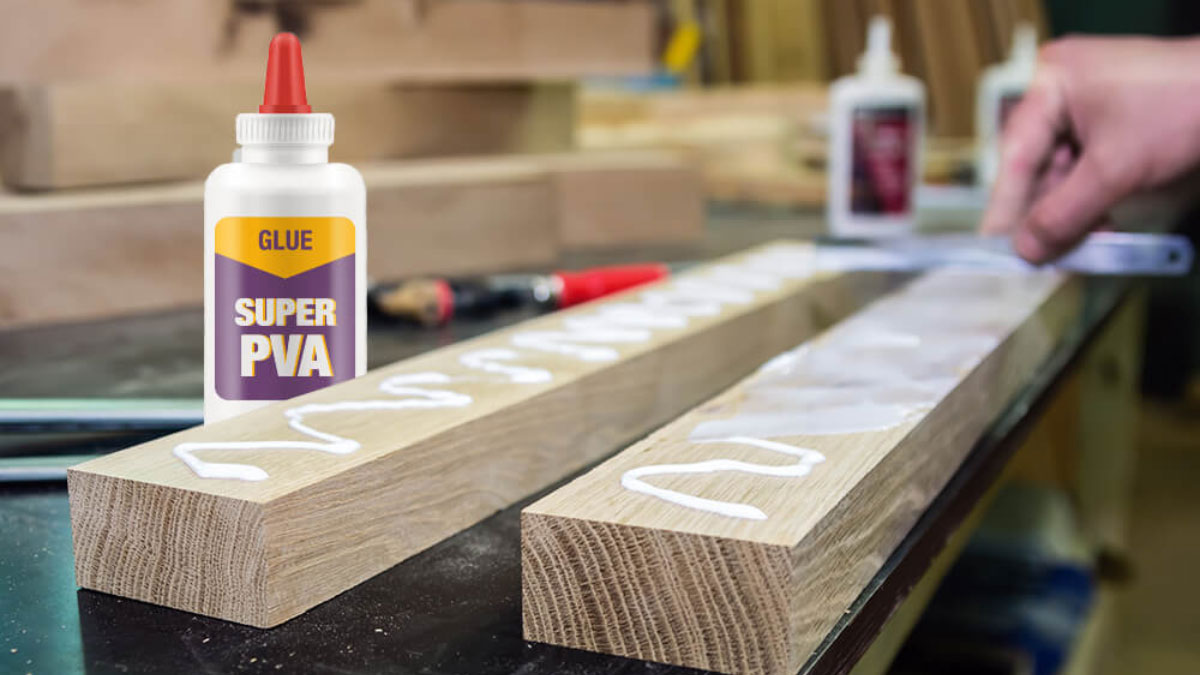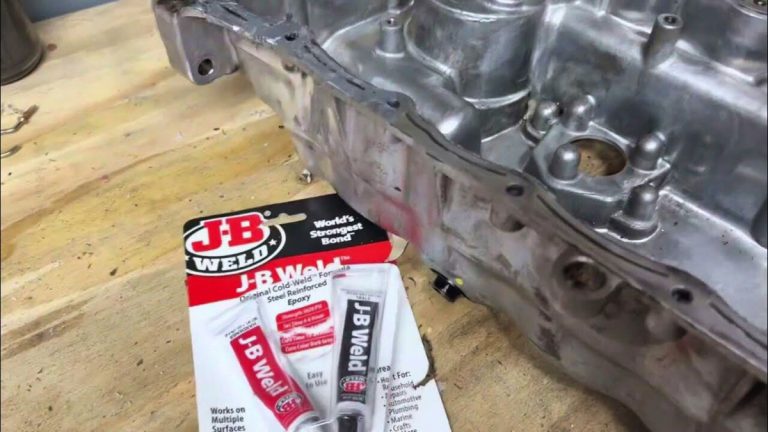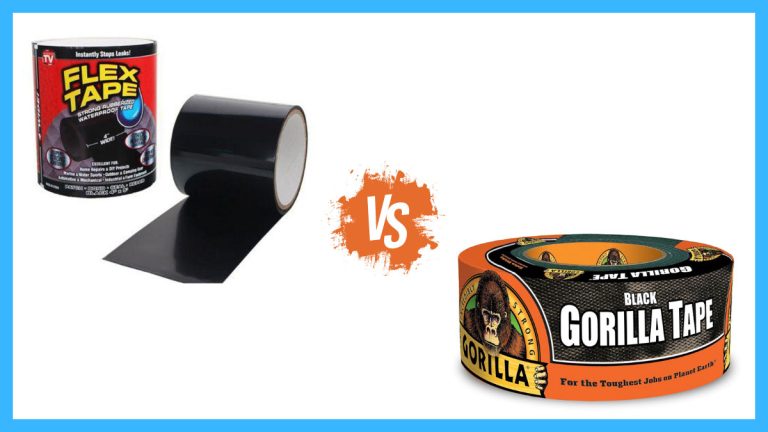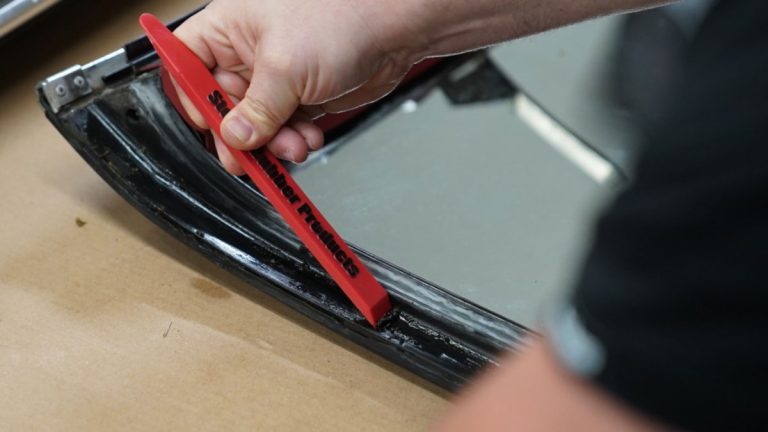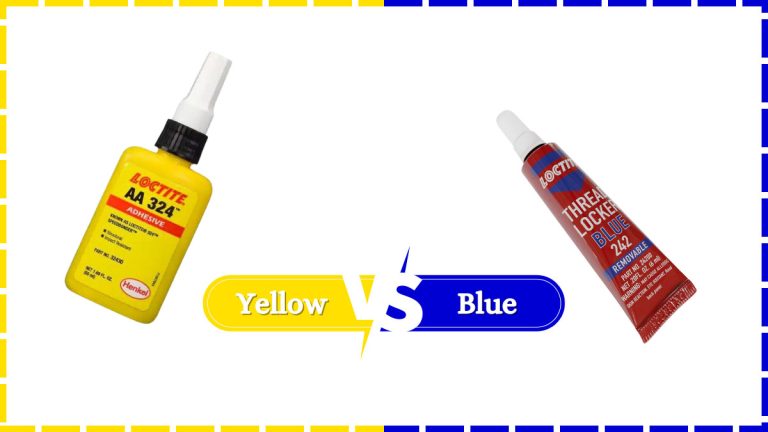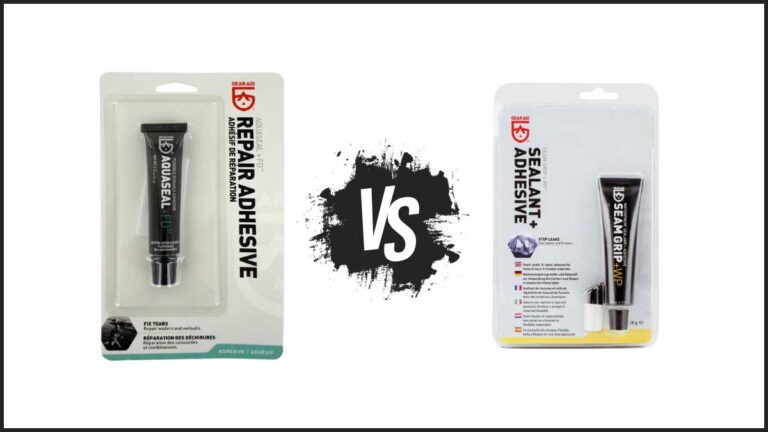Construction Adhesive vs Wood Glue: Choosing the Right Adhesive
Choosing the right adhesive for your woodworking or construction project can make all the difference in durability and strength. When you’re faced with the decision between construction adhesive and wood glue, understanding their unique properties can save you time and effort. Both have their strengths, but knowing which one to use in specific situations is key.
Construction adhesive offers robust bonding capabilities, ideal for heavy-duty projects, while wood glue provides a strong, flexible bond perfect for woodworking. Whether you’re building furniture or tackling a large construction job, the right adhesive ensures your project stands the test of time. Let’s jump into the differences and help you make an informed choice.
Key Takeaways
- Purpose and Use: Construction adhesive is ideal for heavy-duty, multi-material bonding, while wood glue is specialized for strong, flexible bonds in woodworking projects.
- Bonding Strength and Durability: Construction adhesive offers strong initial adhesion and excels on non-porous surfaces, whereas wood glue penetrates wood fibers, providing bonds often stronger than the wood itself.
- Gap-Filling and Flexibility: Construction adhesive effectively fills gaps, making it suitable for irregular surfaces. Wood glue, on the other hand, performs best on tightly fitting joints and can fill gaps when combined with sawdust.
- Drying Time and Ease of Use: Wood glue typically requires 24 hours to dry and needs clamping for effective bonding, while construction adhesive has variable drying times but can take several days to fully cure.
- Clean-Up and Maintenance: Wood glue is generally easier to clean up with a damp cloth before it dries, while solvent-based construction adhesives require solvents like mineral spirits for cleaning.
- Cost and Affordability: Both adhesives are cost-effective, but wood glue may be slightly more expensive per unit. Construction adhesive’s cost can vary, often available in larger, more economical quantities.
What is Wood Glue?
Wood glue is a specialized adhesive designed to bond wood surfaces effectively. Recognized for its strength and ability to penetrate wood fibers, it’s a go-to choice for various woodworking projects. Below, you’ll find a detailed overview of wood glue’s characteristics, formulations, and uses:
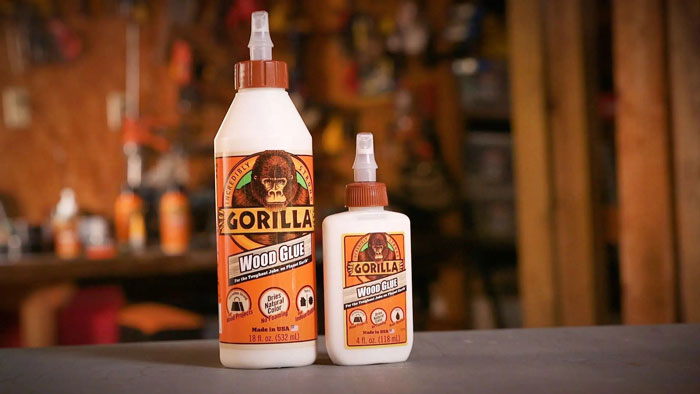
Characteristics of Wood Glue
- Formulation: Wood glue can be water-based, solvent-based, or polyurethane-based. The most common type is water-based.
- Bonding: It penetrates wood fibers, creating an exceptionally strong bond as it dries.
- Drying Time: Typically dries within 24 hours depending on the type and application.
Key Features of Wood Glue
- Strong Bond: Creates a bond often stronger than the wood itself.
- Good for Porous Materials: Suitable for use on various wood types, including softwood, hardwood, and composite woods.
Common Uses of Wood Glue
- Furniture Assembly: Ideal for assembling and repairing furniture pieces.
- Woodworking Projects: Perfect for joining wooden pieces in crafts and construction.
- Repairs: Useful for fixing broken or split wooden surfaces.
Types of Wood Glue
Below is a summary table detailing the different formulations of wood glue:
| Type | Composition | Best For | Example Uses |
|---|---|---|---|
| Water-Based | Polyvinyl Acetate | General woodwork, easy cleanup | Furniture assembly |
| Solvent-Based | Various Solvents | High durability, water-resistant bonding | Outdoor furniture |
| Polyurethane | Reactive Polyurethane | Strong bonds, gap-filling, moisture resistant | Structural components |
Selecting Wood Glue
When choosing wood glue, consider the following:
- Project Type: Match the glue type to your specific project needs.
- Drying Time: Choose a glue with an appropriate drying time for your schedule.
- Moisture Resistance: Opt for solvent-based or polyurethane for outdoor projects.
Use these criteria to ensure you select the best type of wood glue that meets your project’s requirements.
Pros and Cons of Wood Glue
Wood glue stands as a staple in woodworking due to its robust and versatile bonding properties. Here’s an exploration of its pros and cons, aiding you in determining if wood glue is ideal for your specific project.
Pros
- Strong Bond: Wood glue creates a bond often stronger than the wood itself. Ideal for projects like furniture-making and woodworking, it ensures durable and reliable joints.
- Good for Porous Materials: Effective on a variety of woods, including softwood, hardwood, and composite woods, wood glue also works well on other porous surfaces.
- Long Open Time: Wood glue allows more time to align and adjust pieces before it sets. This is beneficial for intricate or large-scale projects.
- Non-toxic: Most wood glues are safe to use indoors as they’re non-toxic and emit no harmful fumes or strong odors.
- Sealing Gaps: Wood glue mixed with sawdust can seal small gaps on wood surfaces, enhancing the overall finish of your woodworking project.
- Limited to Porous Materials: Wood glue isn’t ideal for non-porous materials like metal or plastic. For such materials, construction adhesive is more effective.
- Longer Drying Time: Wood glue typically takes about 24 hours to fully cure, which might delay project completions compared to faster adhesives.
- Moisture Sensitivity: While some wood glues are water-resistant, many can weaken when exposed to excessive moisture unless specified otherwise.
- Joint Set-Up Strength: Without clamping, the bond can be weak during the initial setting period. Effective clamping is necessary to achieve a strong bond.
- Poor Gap-Filling: Unlike construction adhesives, wood glue doesn’t perform well as a gap filler unless combined with sawdust or other fillers.
What is Construction Adhesive?
Construction adhesive is a versatile adhesive designed for general construction purposes, differing significantly from wood glue in its formulation and application. Knowing the key aspects of construction adhesive can help you decide if it suits your project needs.
Key Characteristics
Versatility: Construction adhesive can bond a wide range of materials, including wood, metal, concrete, stone, and plastics. This makes it suitable for various construction applications beyond just woodworking.
Formulations: You can find construction adhesives in several types:
- Solvent-based: Known for strong adhesive properties, ideal for heavy-duty construction in diverse conditions.
- Water-based: Environmentally friendly, suitable for indoor applications where ventilation is limited.
- Polyurethane-based: Offers excellent bonding strength and flexibility, well-suited for areas exposed to moisture and temperature changes.
Bonding Strength
Construction adhesive provides a stronger initial bond and better adhesion on non-porous surfaces compared to wood glue. It withstands a wider range of temperatures and environmental conditions.
Gap Filling
One significant advantage of construction adhesive is its effectiveness at filling small and large gaps. This makes it ideal for bonding irregular surfaces, adding to its versatility in construction applications.
Usage Examples
- Wood to Metal Attachment: Attaching wooden frames to metal structures.
- Mounting Stone Veneers: Securing stone veneers to walls.
- Plastic to Concrete Bonds: Fixing plastic units to concrete surfaces.
| Feature | Construction Adhesive | Wood Glue |
|---|---|---|
| Bonding Materials | Wood, metal, concrete, stone, plastics | Primarily wood |
| Formulations | Solvent-based, water-based, polyurethane-based | Water-based, solvent-based, polyurethane-based |
| Bonding Strength | High on non-porous surfaces | High on porous wood surfaces |
| Gap Filling | Effective for small to large gaps | Limited, needs fillers |
| Temperature Resistance | Wide range | Moderate |
Considering these attributes, construction adhesive offers flexibility and powerful bonding capabilities for diverse construction materials and conditions. Evaluating your specific project needs can guide you in selecting the most appropriate adhesive.
Pros and Cons of Construction Adhesive
Understanding the benefits and drawbacks of construction adhesive will help you make informed decisions for your construction projects. Versatility in material bonding and strong initial adhesion are key factors that differentiate it from other types of adhesives.
Pros
- Versatility: Construction adhesive bonds multiple materials, including wood, metal, concrete, stone, and plastics. This makes it suitable for diverse construction tasks. For example, you can use it to attach wooden frames to concrete walls or metal fixtures to plastic surfaces.
- Gap Filling: It effectively fills gaps of various sizes, ensuring stronger adhesion on surfaces that don’t fit precisely together. This property makes it ideal for applications like uneven stonework or rough carpentry joints.
- Strong Initial Bond: Construction adhesive offers a robust initial bond, particularly on non-porous surfaces. It’s preferred for heavy-duty applications such as attaching counterweights or securing large panels.
- Flexibility: After drying, construction adhesive remains flexible. This helps it withstand changes in temperature and humidity, avoiding stress and potential breakage at the joint.
- Long Open Time: You’ll have more time to position and adjust materials before the adhesive sets because construction adhesive features a long open time, which is beneficial for complex installations or large-scale projects.
- Long Curing Time: It can take longer to fully cure compared to other adhesives. Projects requiring immediate use might find this a limitation.
- Surface Preparation: Surfaces may need thorough cleaning and possibly sanding to ensure optimal bond strength, adding time to the preparation process.
- Potential Chemical Odor: Solvent-based formulations of construction adhesive may emit a strong chemical odor. Adequate ventilation is necessary during application to ensure worker safety.
- Weight: When used in large quantities, it can add significant weight to the structure. This is a concern in certain construction scenarios like lightweight framing.
| Pros | Cons |
|---|---|
| Bonds various materials | Longer curing time |
| Effectively fills gaps | Requires surface preparation |
| Strong initial bond | Possible chemical odor |
| Remains flexible after drying | Adds weight in large quantities |
| Long open time |
Consider these pros and cons to decide if construction adhesive is the right choice for your particular project. Balancing these factors ensures you achieve the desired strength, flexibility, and durability in your construction tasks.
Key Differences
When you’re tackling a woodworking or construction project, choosing the right adhesive is crucial. Understanding the differences between construction adhesive and wood glue helps in selecting the best product for your needs.
Strength
Wood Glue:
- Specifically formulated for bonding wood surfaces.
- Forms a strong bond by penetrating wood fibers.
- Often creates a bond stronger than the wood itself.
Construction Adhesive:
- Strong initial bond, especially on non-porous surfaces like metal, concrete, and plastics.
- May not be as strong as wood glue for wood-to-wood bonding.
Durability
Wood Glue:
- Provides a durable bond on wood surfaces.
- Good resistance to moisture once fully cured.
- Less flexible, which can be a drawback if the wood expands or contracts.
Construction Adhesive:
- Offers durability across various materials.
- Performs well under different environmental conditions.
Drying Time
Wood Glue:
- Typically dries within 24 hours.
- Requires clamping during the initial setting period.
Construction Adhesive:
- Drying times vary based on formulation.
- Can take longer to cure, with some needing up to several days.
Gap-Filling Ability
Wood Glue:
- Not effective at filling gaps unless combined with fillers like sawdust.
- Best used for tightly fitting joints.
Construction Adhesive:
- Effectively fills gaps, making it suitable for irregular surfaces.
- Ensures a strong hold even on uneven surfaces.
Safety
Wood Glue:
- Generally non-toxic.
- Water-based glues are safe and easy to clean up.
Construction Adhesive:
- Some formulations may emit chemical odors.
- Solvent-based adhesives require proper ventilation and safety precautions.
| Category | Wood Glue | Construction Adhesive |
|---|---|---|
| Strength | Penetrates wood fibers, stronger on wood-to-wood bonds | Strong initial adhesion, better on non-porous surfaces |
| Durability | Durable, moisture-resistant after curing | Durable across various materials |
| Drying Time | Typically 24 hours, requires clamping | Varies, can take several days |
| Gap-Filling | Not effective unless combined with fillers | Effective, suitable for uneven surfaces |
| Safety | Generally non-toxic, especially water-based | Some may emit odors, solvent-based require ventilation |
Choosing between construction adhesive and wood glue depends on project specifics. Evaluate the materials, conditions, and requirements to make an well-informed choice.
Applications
Selecting the right adhesive is crucial for the success of various projects. Here’s a detailed look at the applications of wood glue and construction adhesive in woodworking and construction.
Woodworking
Wood Glue:
Wood glue is specifically formulated for bonding wood surfaces. It’s ideal for woodworking projects such as:
- Furniture-making: Ensures strong and durable joints in chairs, tables, and cabinets.
- Joining wooden pieces: Excellent for dovetail, mortise, and tenon joints.
- Repairs involving wood: Effective for fixing splits, cracks, and broken parts in wooden items.
Key features of wood glue include:
- Penetration: Wood glue penetrates wood fibers, creating a bond often stronger than the wood itself.
- Open time: Longer open time lets you adjust pieces before the glue sets.
- Drying and curing time: Requires several hours to days to fully cure; ensures maximum bond strength.
Common types of wood glue:
| Type | Composition | Best Applications | Example Uses |
|---|---|---|---|
| Water-based | PVA (Polyvinyl Acetate) | General woodworking | Furniture assembly, craft projects |
| Solvent-based | Aliphatic resin | Outdoor projects | Deck furniture, exterior repairs |
| Polyurethane-based | Polyurethane | High-stress joints, waterproof | Boat building, outdoor furniture |
Construction and Remodeling
Construction Adhesive:
While wood glue is best for woodworking, construction adhesive shines in broader applications involving various materials:
- Multi-material bonding: Attaches wood, metal, concrete, stone, and plastics.
- Heavy-duty projects: Suitable for tasks like framing, subfloor installation, and paneling.
Notable characteristics of construction adhesive:
- Versatility: Bonds different materials beyond wood, suitable across construction tasks.
- Gap-filling: Effectively fills gaps on irregular surfaces, ensuring overall stability.
- Initial adhesion: Provides strong grip right after application, though it takes longer to fully cure.
Usage examples:
- Wood to metal attachment: Secures metal brackets to wooden beams.
- Mounting stone veneers: Bonds heavy stone to walls or other structures.
Types of construction adhesive:
| Type | Composition | Best Applications | Example Uses |
|---|---|---|---|
| Solvent-based | Rubber/resin blend | Durable, weather-resistant bonds | Outdoor projects, heavy-duty mounting |
| Water-based | Latex or acrylic | Interior tasks, less toxic | Indoor paneling, trim installation |
| Polyurethane-based | Polyurethane | Flexible, gap-filling | Subfloor installation, mixed-material bonding |
Summary
Choosing the proper adhesive depends on project needs:
- For Woodworking: Use wood glue for wood-specific tasks where durability and precise adjustments are vital.
- For Construction: Opt for construction adhesive for versatile, heavy-duty applications requiring bonding of various materials.
Evaluate each project’s specific requirements to select the most effective adhesive for strong, long-lasting results.
Clean-Up and Maintenance
Clean-Up
- Wood Glue:
- Ease of Clean-Up: Wood glue is usually water-based, making it easy to clean up with a damp cloth before it dries.
- After-Drying: Sanding can remove dried wood glue, but immediate clean-up is recommended to avoid extra effort.
- Construction Adhesive:
- Solvent-Based: Solvent-based construction adhesives like polyurethane require solvents such as mineral spirits or acetone for cleaning, posing hazards and needing caution.
- Water-Based Options: While easier than solvent-based, water-based construction adhesives still present more cleaning challenges compared to wood glue.
Maintenance
- Wood Glue:
- Longevity: Proper use of wood glue can provide lasting bonds, especially suitable for indoor projects.
- Moisture Sensitivity: Wood glue, unless specifically designed to be waterproof, may degrade in high-moisture environments.
- Repairs: Sanding the glued surface and reapplying wood glue can fix minor issues.
- Construction Adhesive:
- Durability: Construction adhesive offers robust bonds that can withstand various environmental conditions.
- Surface Prepping: Ensuring surfaces are clean and dry extends the adhesive bond’s life.
- Versatility: Repairs on different materials are possible thanks to the adhesive’s compatibility with multiple substrates.
| Category | Wood Glue | Construction Adhesive |
|---|---|---|
| Ease of Clean-Up | Easy, water-based, damp cloth | Hard, requires solvents like mineral spirits or acetone |
| After Drying | Sandable, best if cleaned promptly | More effort, solvents necessary for hardened adhesive |
| Longevity | Long-lasting for indoor use, moisture-sensitive | Very durable, withstands various conditions |
| Repairs | Simple, sanding and reapplication | Compatible with various materials, surface prep required |
Use this information to decide on the best solution for your specific project needs.
Cost Comparison
When comparing the costs of construction adhesive and wood glue, it’s essential to consider their prices per unit and overall affordability.
Wood Glue:
- Cost: Wood glue is generally inexpensive. You can buy an 8 oz container for less than $5. Larger quantities often reduce the cost per unit.
- Brands: Popular brands like Titebond and Gorilla Glue offer wood glue at competitive prices, ensuring affordability.
Construction Adhesive:
- Cost: Construction adhesive, such as Liquid Nails, typically costs around $2-3 per tube.
- Packaging: Available in larger quantities packaged in cardboard tubes similar to caulk.
- Special Deals: Occasionally, you might find construction adhesive packs on sale for significantly lower prices, such as $0.99 after rebate, though these offers are less common.
| Adhesive Type | Typical Cost (small quantity) | Typical Cost (large quantity) | Brands |
|---|---|---|---|
| Wood Glue | Under $5 per 8 oz | Reduced cost per unit | Titebond, Gorilla Glue |
| Construction Adhesive | $2-3 per tube | Variable, competitive prices | Liquid Nails |
Both wood glue and construction adhesive are affordable for most DIY and construction projects. While wood glue can be slightly more expensive per unit, both products offer cost-effective solutions depending on your specific needs.
Conclusion
Choosing the right adhesive for your project is crucial for achieving the best results. Construction adhesive offers strong initial adhesion and versatility across various materials, making it ideal for heavy-duty tasks. On the other hand, wood glue excels in woodworking projects with its strong bond and ability to penetrate wood fibers.
Consider your specific project requirements, such as material type and desired bond strength, to determine the best adhesive. Whether you’re assembling furniture or tackling a construction project, selecting the appropriate adhesive will ensure durability and success.
Frequently Asked Questions
Can construction adhesive be used on wood?
While construction adhesive can bond wood, it’s usually reserved for heavy-duty applications due to its strong bonding capabilities. For woodworking projects, wood glue is recommended as it provides a flexible bond specifically designed for wood.
What is the best glue to stick wood to wood?
One of the most durable and versatile wood glues is polyurethane wood glue. It’s waterproof, making it suitable for both indoor and outdoor projects and forms a strong bond that blends naturally with the wood.
Can construction adhesive be used as wood glue?
Construction adhesive can be used on wood, but it may not be ideal for all woodworking applications. Understanding the specific requirements of your project will help determine whether wood glue or construction adhesive is more appropriate.
How long does construction adhesive last?
Unopened construction adhesives typically have a shelf life of about 12 months under standard storage conditions. This can vary depending on the chemical composition of the adhesive.
What is construction adhesive good for?
Construction adhesive is ideal for heavy-duty DIY projects such as molding, paneling, baseboards, and subfloor installations. Its strong initial adhesion and versatility make it suitable for bonding a variety of materials.
What are the key differences between wood glue and construction adhesive?
Wood glue is specifically designed for bonding wood surfaces, offering strong bonds and moisture resistance but requires clamping and isn’t effective for gap-filling. Construction adhesive, on the other hand, excels in multi-material bonding, strong initial adhesion on non-porous surfaces, and filling gaps but may have longer curing times and potential chemical odors.
What are common uses for wood glue?
Wood glue is commonly used for furniture assembly, woodworking projects, and repairs. It is excellent for bonding various wood types and creating strong, durable joints.
How do you clean up wood glue?
Wood glue can be easily cleaned up with water if done before it dries. Once it has dried, it becomes more challenging to remove and may require sanding or scraping.
How do you clean up construction adhesive?
Water-based construction adhesive can be cleaned with water before it dries. Solvent-based types require a solvent for clean-up, which can pose hazards due to chemical odors and flammability.
How much does wood glue typically cost?
Wood glue is generally inexpensive, with an 8-ounce container costing less than $5. It offers a cost-effective solution for various woodworking projects, balancing affordability and effectiveness.

